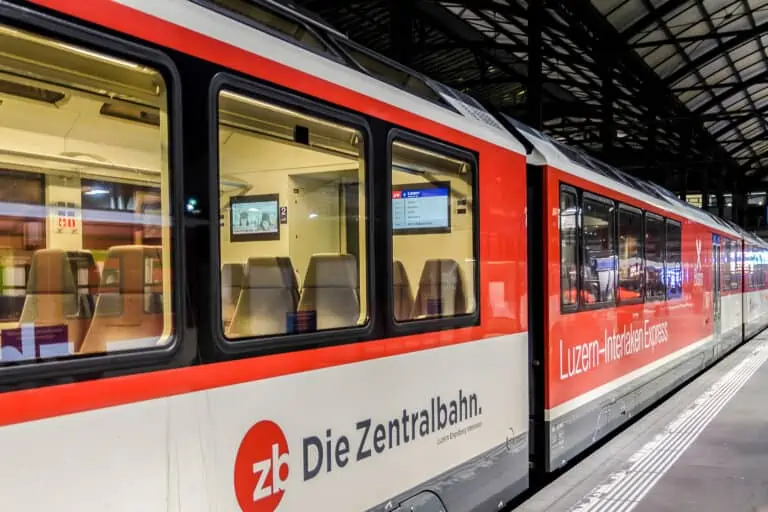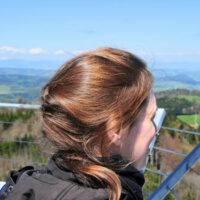Many public transport companies cover all of Switzerland
The SBB and other companies
Switzerland has its Swiss Federal Railways, called SBB (in German), CFF (in French) or FFS (in Italian). The SBB don’t service the whole country. There are many other railway companies as well.
How multiple companies form one great network
For you as a traveler, it’s not relevant to know which company services which route. All of these companies work together and form the public transport network of Switzerland. This is how:
- On most routes, there’s only one travel mode (for example bus or train) and one company that operates it. So there isn’t really a choice. You just travel with the company that happens to service your route.
- Trains are the main way to travel between towns and villages.
- Buses transport to you smaller villages and more remote areas.
- Cable cars, cogwheel trains, and funiculars transport you to the mountain tops.
- Urban transport consists of buses, trams and local trains. Each city can have its own regional or urban companies.
- There are frequent boat services on most larger lakes.
How ticket and rail pass prices work with all of these companies
You’ll find prices for nearly all trips, whether operated by the SBB or pretty much any other transport company, in the national Swiss timetable. Details:
- If a route happens to be serviced by multiple operators (which doesn’t occur often), there is no price difference.
- Tickets are purchased for a route, and they are valid for any operator on that route.
- There can be several routes to travel from A to B. For example: you can travel from Montreux to Bern via Lausanne and Fribourg, or via Neuchâtel, or via Visp and Spiez, or via Gstaad and Zweisimmen (the GoldenPass route). All routes have different durations, operators and prices. The operators don’t matter for your ticket, but the length of the routes and their prices do. So point-to-point tickets should be used for one route only: the one specified on the ticket.
- Rail passes are valid for either the whole country or a region. They can be used for all trains, buses, and other transport on the covered routes, regardless of the companies operating them. The validity maps that you can find on each of our rail pass pages show where you can travel for free or with discounts.
- Only a few exceptions apply to the above rules. Some panoramic trains require additional seat reservations for example, and just a ticket or rail pass won’t be enough.
Switzerland’s main railway companies
There are too many companies to list here, but some of the major ones are:
- Swiss Federal Railways (SBB): www.sbb.ch
- Bern Lötschberg Simplon Railway (BLS): www.bls.ch
- Rhätische Bahn or Rhaetian Railways (RhB): www.rhb.ch
- Matterhorn Gotthard Railway (MGB): www.matterhorngotthardbahn.ch
- Montreux–Oberland Bernois Railway (MOB): www.mob.ch
- Zentralbahn: www.zentralbahn.ch
Switzerland’s other transport companies
In addition to railway companies, there are many other transport companies in Switzerland. They operate lake boats, urban tram and bus networks, mountain routes, and so on. You’ll find relevant information on each of our activity pages.





